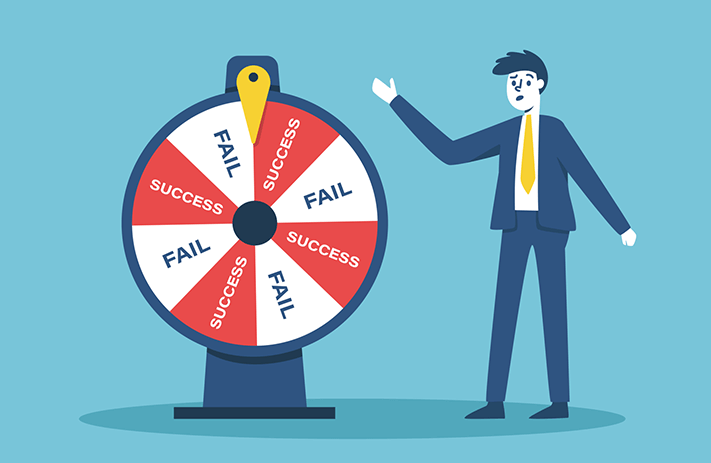
Click the button to start reading
Reducing Risk and Maximizing Success: How to Tackle Cost Variance in Project Management
As a project manager, you know that keeping your projects on track and on budget is crucial to their success. One of the key tools at your disposal for doing so is cost variance analysis. But what exactly is cost variance, and how can you use it to your advantage?
In this blog post, we’ll delve into the concept of cost variance in project management and how it can impact the success of a project. We’ll explore how to calculate cost variance, the relationship between cost variance and schedule variance, and tips for containing cost variance. By the end of this post, you’ll have a solid understanding of this important concept and how to use it to your advantage in your project management endeavors.
So, whether you’re a seasoned pro or a newcomer to the world of project management, this blog post has something for you. Let’s get started!

Defining Cost Variance
So, what exactly is cost variance? It’s simply the difference between the actual cost of a project and the budgeted or planned cost. It’s usually expressed as a percentage or a monetary value and can be either positive or negative.
A positive cost variance means that your project is under budget – yay! – while a negative cost variance means that it’s over budget. No need to panic, though – we’ll discuss how to address this later.
Importance of Cost Variance
As a project manager, tracking cost variance is crucial because it helps you see how well your project is sticking to its budget. This is especially important if you work with limited resources or have strict financial constraints.
Cost variance is often used alongside schedule variance, which measures the difference between a project’s actual and planned schedule. By keeping an eye on cost and schedule variance, you can get a complete picture of your project’s performance and make any necessary adjustments.
Calculating Cost Variance
Okay, so now that we know what cost variance is, let’s discuss how to calculate it. Don’t worry; it’s not as scary as it sounds.
All you need is the following formula: (Actual Cost – Budgeted Cost) / Budgeted Cost. Let’s break it down:
Actual Cost
This is the amount of money your project actually costs. It can be tricky to determine if your project is still ongoing, but you can use your best estimate based on the progress you’ve made so far.
Budgeted Cost
This is the amount of money you plan to spend on your project. If you’re using this formula after the fact, this should be a piece of cake – it’s just the budget you set at the beginning of your project.
Actual Cost – Budgeted Cost
This part of the formula calculates the difference between your actual and budgeted costs. If the result is positive, your project is under budget. If it’s negative, your project is over budget.
(Actual Cost – Budgeted Cost) / Budgeted Cost:
Finally, we divide the difference between your actual and budgeted costs by your budgeted cost to get the cost variance as a percentage. If your cost variance is positive, that’s a good thing – it means you have some wiggle room in your budget. If it’s negative, that means you’re over budget, and you might want to start looking for ways to bring your costs back in line.

3 Common Reasons Why Cost Variance Happens
There are a few common reasons why cost variance happens, and understanding these can help prevent them from occurring. Here are three common causes of cost variance:
Reason #1 Changes in scope:
One of the most common reasons for cost variance is changes in scope – that is, changes to the scope of work initially planned for the project.
Maybe your client changed their mind about something, or you realized that you needed to add an extra feature to your product. Either way, changes in scope can significantly impact your budget, so it’s important to keep an eye on them and be prepared to adjust your budget accordingly.
Reason #2 Unexpected changes in resource availability or cost:
Another common cause of cost variance is unexpected changes in resource availability or cost.
You may have planned to use a specific vendor for a particular service, but they suddenly increased their prices. Or you thought you had a specific resource available, but it wasn’t as open as you thought. These changes can throw a wrench in your budget, so it’s crucial to be proactive about identifying them and finding ways to address them.
Reason #3 Inadequate budgeting or planning:
Finally, cost variance can sometimes be caused by inadequate budgeting or planning.
For example, you needed to do more research to determine the actual cost of a particular resource, or you needed to account for all of the potential risks and contingencies in your budget. In these cases, reviewing your budget and planning process is important to see where you can improve.

How to Address Negative Cost Variance
So, what do you do if your project is over budget due to negative cost variance? First, don’t panic – you can take a few steps to address this issue and get your project back on track. Here are a few suggestions:
STEP 1 – Review the cause of the cost variance
The first step in addressing negative cost variance is to understand why it happened in the first place. Take a look at the common causes we discussed earlier in this post – changes in scope, unexpected changes in resource availability or cost, and inadequate budgeting or planning – and see if any of these factors apply to your project. This will help you identify the root cause of the cost variance and take appropriate action to address it.
STEP 2 – Communicate with your stakeholders
Once you understand the cause of the cost variance, you must communicate with your stakeholders – including your team, your client, and any other relevant parties – to let them know what’s going on.
Be transparent about the situation and explain your steps to address it. This will help build trust and ensure everyone is on the same page.
STEP 3 – Adjust your budget
Depending on the cause of the cost variance, you may need to adjust your budget to account for the additional costs.
This might involve negotiating with your client or other stakeholders to secure additional funding or finding ways to cut costs elsewhere in the project. So again, it’s essential to be creative and proactive in finding solutions to get your project back on track.
STEP 4 – Keep track of your progress
Finally, as you address the cost variance, keep track of your progress and continue monitoring your budget. This will help you see how well your efforts are working and make any necessary adjustments along the way.

The Relationship Between Cost Variance and Schedule Variance
In addition to tracking cost variance, it’s vital to track schedule variance in project management. This measures the difference between the actual and planned schedules of a project.
So, what’s the relationship between cost variance and schedule variance? Well, it turns out that they’re closely related – if one goes off track, it can have an impact on the other.
For example, if you need to catch up on a project, it could lead to additional costs. On the other hand, if you’re over budget on a project, you might have to adjust your schedule to make up for the additional costs.
You can get a complete picture of your project’s performance by keeping track of both cost and schedule variance. If one of these metrics is going off track, take a closer look at the other.
7 Protips for Containing Cost Variance
Keeping projects within budget can be a challenging task, but there are measures you can take to stack the odds in your favor.
Here are 7 tips to help you contain cost variance:
- Do your homework: A key factor in containing cost variance is having a thorough understanding of the project’s needs. Take the time to fully grasp the project’s scope and document and confirm every requirement with all necessary parties. If the project is similar to what you’ve done in the past, take that knowledge and refine it.
- Plan for the unexpected: Even the most carefully planned budgets can be thrown off track by unforeseen events, such as global pandemics or fluctuations in labor costs, supply pricing, or currency exchange rates. To help mitigate these risks, building some wiggle room into your budget is essential.
- Manage change effectively: When change does occur, it’s crucial to have communication tools in place to manage it smoothly. This could include email, chat, in-app messaging, or regular status meetings. Keeping the lines of communication open can reduce confusion, limit surprises, and ultimately better manage your budget.
- Monitor your budget closely: Regular monitoring is crucial for containing cost variance. By keeping a close eye on your spending and making adjustments as needed, you can catch potential issues early on and take steps to bring costs back in line.
- Negotiate with suppliers: If you’re facing unexpected cost increases due to factors like supply pricing or shortages, it might be worth negotiating with your suppliers to try and get a better deal. This can bring your costs down and reduce negative cost variance.
- Consider alternative solutions: If you’re facing a cost overrun, it might be worth exploring alternative solutions that could be more cost-effective. For example, could you use a different supplier or a different type of resource to achieve the same result?
- Communicate with your team: Remember the importance of effective communication. Keep everyone informed about the budget and any potential cost issues, and encourage them to bring any ideas or concerns to the table. By working together, you can find ways to contain cost variance and keep your project on track.

Real-World Examples of Cost Variance
One of the best ways to understand how to manage cost variance in your projects is to see how it has played out in real-world scenarios. This section will explore a few examples of projects where cost variance occurred and how it was addressed.
By looking at these examples, you’ll get a sense of the issues that can arise and how experienced project managers have handled them. Whether you’re facing a negative cost variance or a positive one, these examples can provide valuable insights and inspiration for managing your projects.
Example 1:
You’re in charge of a landscaping project for a client’s backyard. You’ve budgeted $1,000 for the project, but as you’re working, you realize that the ground is more rocky and challenging to dig up than you anticipated. As a result, you end up using more labor hours and materials than you thought you would. Your final bill comes to $1,200.
Calculating the cost variance:
Cost variance = $1,000 – $1,200 Cost variance = -$200
Expressing the cost variance as a percentage:
Cost variance % = (-$200) / $1,000 Cost variance % = -20%
Example 2:
You’re managing a renovation project for a local coffee shop. You’ve budgeted $20,000 for the project, but when you open up the walls, you find more structural damage than expected. As a result, you need to do more work and spend more on materials than anticipated. Your final bill comes to $25,000.
Calculating the cost variance:
Cost variance = $20,000 – $25,000 Cost variance = -$5,000
Expressing the cost variance as a percentage:
Cost variance % = (-$5,000) / $20,000 Cost variance % = -25%
Example 3:
You’re in charge of a marketing campaign for a new product launch. You’ve budgeted $10,000 for the campaign, but when you book the ad space and run the ads, you find that the prices have increased significantly since you first planned the campaign. So your final bill comes to $12,000.
Calculating the cost variance:
Cost variance = $10,000 – $12,000 Cost variance = -$2,000
Expressing the cost variance as a percentage:
Cost variance % = (-$2,000) / $10,000 Cost variance % = -20%
Conclusion
As you’ve learned in this blog post, cost variance is a crucial aspect of project management that can significantly impact your project’s success.
By understanding cost variance and how to calculate it, you’ll be better equipped to manage it effectively. And by following the protips for containing cost variance and learning from real-world examples, you’ll have a better chance of keeping your projects on track and on budget.
So, as we wrap up this blog post, remember the importance of keeping an eye on cost variance and taking steps to manage it. Whether you’re facing a negative cost variance or a positive one, being proactive will help you stay on top of your budget and achieve the best possible outcome for your project.
Thank you for reading! I hope this blog post has provided valuable insights and tips for managing cost variance in your projects. Good luck with your future project management endeavors!
















